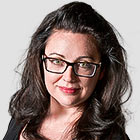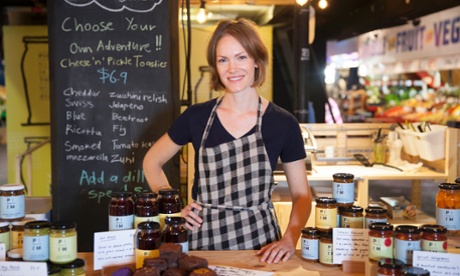The Adelaide locals call it “Mad March”, and why wouldn’t they? For them, this single month annually contains a supercars road race, a world music festival, international cricket competition, a horse-racing cup and an international arts festival. This extravaganza of civic entertainment may have the appearance of a tourism scheduling nightmare, but it’s inarguable the city has ambition.
It needs it. The South Australian capital faces an uncertain future. If it wasn’t enough that climate change is predicted to cost the city half of its present water supply by 2070, the closure of its local car industry and threats to its shipyards are destabilising the economy as well. It’s little wonder that Christopher Pyne petitioned his own government to reverse cuts to local broadcasting jobs at the ABC. Creative social and economic initiatives are precious values in an uncertain place. Commentators suggest that “a failure to project a positive vision for the future” is why conservatives have governed South Australia for only 14 years out of the last 50.
The capitalisation of Adelaide’s cultural infrastructure started back in the 1970s with South Australia’s visionary Labor premier, Don Dunstan. It was Dunstan’s belief in the centrality of arts investment to social policy outcomes that, among many achievements, built the Adelaide Film Commission and injected enough money for the International Arts Festival to develop scope, influence and prestige.
This reconceptualisation of Adelaide as a vibrant cultural tourist destination rather than a sleepy “city of churches” is the positive economic outcome of Dunstan’s progessive social policy. While it’s tempting to write off Mad March’s races and shows as bread and circus events in an incipient-factory-closure town, the compensation that creative cultural investment provides has been borne out in international examples like Sheffield in the UK. That city’s depressing industrial decline as depicted in the movie The Full Monty was partially arrested by 1990s’ programs of cultural investment in sport, arts infrastructure and education that rebranded the city as a cheap and fun place to study and innovate. These days, 43.2% of Sheffield’s workforce are employed in higher-end occupations – with a high percentage of students choosing to remain living in the old blue-collar town after they graduate from its two local universities.
The Australian tribes that converge at Adelaide’s Mad March events also bring the cultural value of diversity to the city. Communities of artists and performers assembling for the Adelaide fringe spend four days sharing Adelaide’s eastern half with the crowds of the car races in the Clipsal 500. This year, fringe highlights included Marieke Hardy staging funerals for her audience members and Bryony Kimmings’ cute show made with her boyfriend about his depression. It was a helluva contrast with the nearby roars of petrol engines from V8 Supercars and a daily ear-bursting sky-rip by a fighter-jet flyover. As both the fringe and the Clipsal are now annual events, so now, too, are the complaints from fringe artists that the Clipsal “bogans” are noisy and clogging up the roads while Clipsal attendees grumble they can’t get cheap accommodation in a city suddenly full of pasty “weirdos”.
The city’s last laugh is that the appeal, interest and value of the twinned events is much the same. In 2014, the month-long fringe sold more than 450,000 tickets to events, brought 1.9 million people into the city and injected $66.3m to the South Australian economy. This year, Clipsal attendance over its four days hit 285,000 and its own $60m economic contribution.
The crowds are essentially coming for the same thing. As fringe performers in circuses like Scotch and Soda display death-defying feats on rollerskates, so, too, are the Supercar teams defying the notorious “turn eight” on the Adelaide track, with its risks of spectacular smashed bodywork. Grumpy Adelaide theatremakers can’t count on the climate change imperative to phase out the fuel engine and therefore the Clipsal crowds, either. The sport is adaptive – hybrid fuel technology is already in Formula One, supercars are embracing biofuels and Formula E electric racing is in bud. Motoring journalist Peter Anderson could easily be talking about theatre when he explains the demise of the local car production will not affect the Clipsal, either:
It’s always a drama-packed race and people come for the drama. You could have a bunch of Australians driving Mazda hatchbacks around and if it’s a spectacle, Australians would probably turn up and watch.
It would be unwise to underestimate the positive policy effects of what merely appears to be popular entertainment. Engaging diverse local communities and industries in intersecting cultural events is inspirational to people, and inspiration is a necessary resource for economic development and growth.
South Australia faces present and future challenges of serious economic and climate change transformation. Creativity, innovation, adaptability, community harmony and popular involvement are required to confront them. It just may be that the conceptual framework presented by its singular cultural season will encourage the industries, ideas, intellectual capital, property and products required to survive the seasons ahead.











